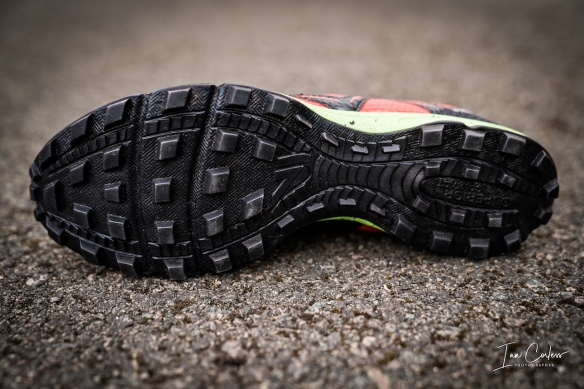
It has been a while since I slipped on a Salomon shoe for my daily runs. No particular reason, sometimes when testing shoes, I find a real winner and then that becomes my shoe of choice. I wrote last year how I loved the Nike Wildhorse 4, I still love them, and they go everywhere, I would say that they are my ‘go to’ shoe that handles a little of everything with loads of comfort, security and all in a great looking shoe. 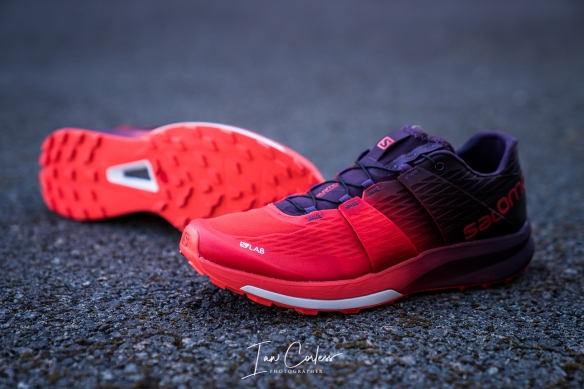
I have always been a fan of the Salomon S-Lab Sense both in normal HERE and SG HERE (soft ground) versions, however, for me, they are just a little too minimalist for everyday running and longer runs.
The S-LAB ULTRA is a shoe that may well be a game changer for Salomon. 
To clarify, Salomon fans are already happy with the Sense shoes and its variants, however, I cannot tell you how many times I have had messages asking me to feedback to Salomon the need for:
- Wider toe box
- Higher drop (8mm)
- More cushioning
- And all the same goodies that made the Sense such a great shoe.
Well, the S-LAB ULTRA is the shoe! 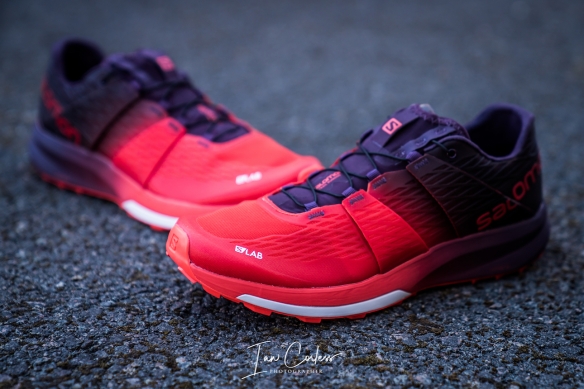
FIRST IMPRESSIONS
It’s that classic red colour that Salomon utilize so well and at first glance you know it is a Salomon shoe. It’s a good-looking shoe, the fade between red at the front and a darker colour at the rear is ‘sexy,’ if a shoe can be sexy? 
The first thing you notice are two straps on either side of the outside of the shoe. It makes the shoe look a little heavy and somewhat over engineered. This is a protective Skin guard – more on that later.
 The toe box is visibly wider, beefier and well protected.
The toe box is visibly wider, beefier and well protected.

The cushioning is visibly deeper both at the front and rear. This is, as Salomon says: “Energysave® foam insert in the forefoot adds long-lasting cushioning and protection from rocks and rough ground, while ENERGYCELL+ foam in the bottom unit ensures a smooth, consistent ride.”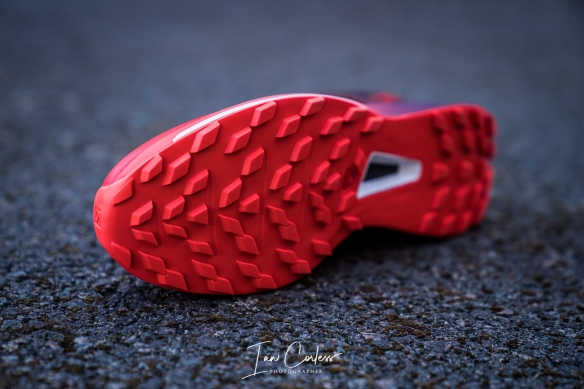
The grip looks pretty classic for a Salomon trail shoe. It’s red, with a standard trail lug that is not too aggressive. So, this shoe is obviously not designed for mud, it is a hard trail shoe that can be used on a multitude of surfaces, be that wet or dry. It is, “an all-new Contagrip® outsole, with premium wet traction and reverse lugs on the heel area, delivers confident grip, especially on the downhills.”
At £160 a pair, they aint cheap!
On Salomon’s website, they say the usage is ‘Racing Only’ but I have to disagree, this is a brilliant day-to-day comfy shoe that can handle pretty much anything with comfort, road too! Maybe this advice comes based on the price and they would recommend another similar Salomon shoe for day-to-day and keeping the S-LAB Ultra for special occasions… nah! If they are that good, use them I say! But the Salomon Sense Ride has an 8mm drop with 19/27mm cushioning and a similar outsole and they are £50 per pair (£110) cheaper. So. It is worth considering a training/ racing combo? – HERE
THE SHOE

Cushioning is excellent with 18mm at the front and 26mm at the rear, this provides an 8mm drop which for me is the perfect drop for longer runs. It’s a light shoe, but not super-light. A UK8 comes in at just under 300g. In a UK 9.5 (my size) it weighs 340g which is exactly the same as the SCOTT KINABALU HERE – there actually is a great deal of similarity in these shoes. My Nike Wildhorse 4 though are 290g in the same size, so, if I was a weight freak, the Nike’s win hands down!
I always say this about Salomon shoes and two things always stand out: 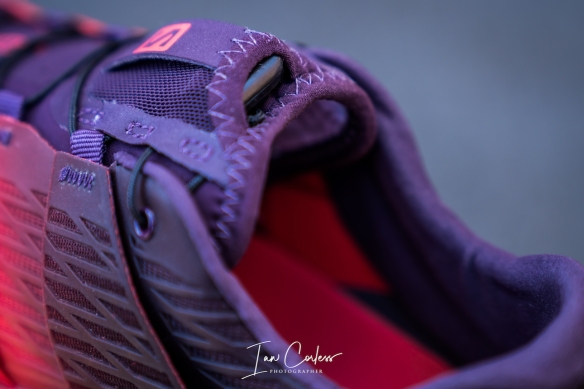
The lacing with the storage pocket.
ENDOFIT internal sock liner.
 The ENDOFIT is just so awesome, it hugs the foot, holds it, secures it and keeps it protected. It is perfect. Other shoes come close, but I think Salomon ‘just’ win each time. Nike Wildhorse 4 has something similar, it is awesome and, in all honesty, why I love the Nike shoe so much. The other shoe that is similar is the VJ XTRM HERE. Actually, the ‘new’ reinforcing on the outside of the new S-LAB Ultra does a very similar thing to the Fitlock on the VJ.
The ENDOFIT is just so awesome, it hugs the foot, holds it, secures it and keeps it protected. It is perfect. Other shoes come close, but I think Salomon ‘just’ win each time. Nike Wildhorse 4 has something similar, it is awesome and, in all honesty, why I love the Nike shoe so much. The other shoe that is similar is the VJ XTRM HERE. Actually, the ‘new’ reinforcing on the outside of the new S-LAB Ultra does a very similar thing to the Fitlock on the VJ.
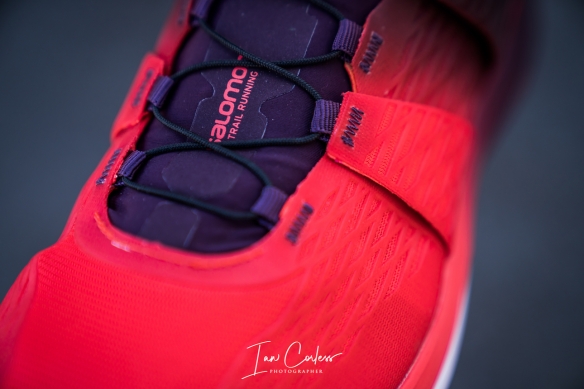
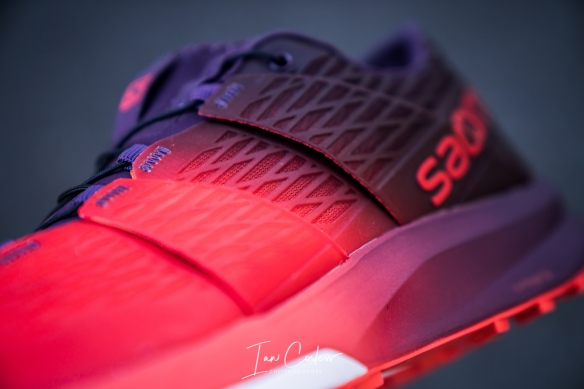
The new straps on the outer of the shoe are significant, there is four of them, two on each side. Two lower, two higher – the laces pass through them and when you pull the lace tight, they bring the shoe in tighter in four key points, in addition with the sockliner, the foot is held firm in one of the most reassuring and comfortable grips I have experienced. 
The laces are classic Salomon. You pull them tight, slide the toggle down and then stuff the excess in the little ‘garage’ at the top of the tongue – so simple it is ingenious.
The inner of the shoe is pretty much seamless, so, if you wanted to go soulless you could. 
The heel box is plush, padded, really comfortable and holds the foot firm.
The toe box is wider and has an excellent toe bumper to protect against the terrain.
This shoe has been designed with a great deal of influence from Francois D’Haene and you can see why. He runs long, and he needs a shoe that can handle long hours on his feet, provide comfort, toe splay, cushioning and grip without losing many of the aspects of what has made the ‘Sense’ range so popular.
The upper of the shoe is a breathable mesh with Ortholite Impressions which add structure and reinforcement to the shoe.
Midsole is cushioned and really is excellent on longer runs. Combined with the 8mm drop this is a great shoe for those who are running 80km and beyond. The combination of compressed EVA and Salomon’s EnergyCell make them very comfortable but not spongy. At all times, the S-LAB Ultra feels firm on the ground, allowing you to feel the ground but still run with precision.

 The outsole is classic Salomon. However, the S-LAB Ultra has a ‘new’ Premium Wet Traction Contagrip that works really well on a multitude of terrain, wet or dry. There is a Profit Film in the chassis of the shoe which protects against rocks and sharp objects – it is rock plate!
The outsole is classic Salomon. However, the S-LAB Ultra has a ‘new’ Premium Wet Traction Contagrip that works really well on a multitude of terrain, wet or dry. There is a Profit Film in the chassis of the shoe which protects against rocks and sharp objects – it is rock plate!
IN USE
Slipping the S-LAB Ultra on you immediately notice how comfortable they are, the ENDOFIT just does its job perfectly and you can use them around the house without laces, they are that comfy and reassuring. Pull the laces and you feel your foot held in one of the most comfortable and tight embraces. It is so reassuring. I do not like sloppy shoes and my foot moving around inside the shoe – no chance of that here. BUT the laces are had to adjust, it’s all or nothing! However, I find this system preferable to the BOA system which adidas are using – at least I can pull my laces really tight in the Salomon.
At the front end the additional room is very obvious in comparison to a pair of Sense.
The cushioning is also noticeable, you get that wonderful slightly bouncing feel when walking around.
On road they provide great comfort and grip and for sure, if I had to run large road sections in a race or training, I’d have no worries using this shoe. On hard pack trail they do a great job providing feel for the ground but not at the compromise of protection. The outsole is aggressive enough to grip when it is required. In mud they are pretty useless, the lugs are just not aggressive enough so keep that in mind. On grassy banks going up or down, they were great. On wet grassy bank in the wet they did slip once or twice – nothing crazy and I never fell over. On rock, grip is excellent in the dry but just a little compromised in the wet. In comparison to the Nike Wildhorse 4 in the wet, Salomon’s grip is superb, the Nike’s are a liability!
The S-LAB Ultra is a solid all-rounder – be that road, trail, rocks, sand or whatever. It does nothing brilliantly and nothing bad. It’s a solid shoe for the long game, hence the Ultra title. To provide a scenario, I would say a S-LAB Sense is a Formula 1 car for shorter, faster and more aggressive races, whereas the S-LAB Ultra is better for Le Mans 24-hour race.
CONCLUSION
The S-LAB Ultra is for those who require a shoe that can handle a little of everything in a cushioned 8mm drop shoe that has great looks. ENDOFIT is just brilliant but I am well aware that not everyone likes it; I love it! The laces do the job brilliantly, again, not everyone like this type of lacing because of the lack of adjustment. The lugs are middle of the road and for some, may not be aggressive enough and despite the ‘wet traction’ name, the Contragrip is still not 100% in the wet. For example, inov-8 has the new Graphene and Sticky Rubber outsole and that really works. At £160 they are expensive, which is maybe why Salomon recommend them for racing? There is a great deal to like in the Salomon S-LAB Ultra and they have been used regularly by me as my ‘daily’ shoe for my 8/9 mile run as I have a whole mix of terrain that includes 2-miles of road, canal tow path, forest trail, gravel path and a little mud – the S-LAB Ultra handles all this superbly. I travel a great deal and these shoes provide me a simple solution as to what shoes to take as I know I can pretty much do anything in them. They are solid shoes and recommended.
Follow on:
Instagram – @iancorlessphotography
Twitter – @talkultra
facebook.com/iancorlessphotography
Web – www.iancorless.com
Web – www.iancorlessphotography.com
Image sales –www.iancorless.photoshelter.com













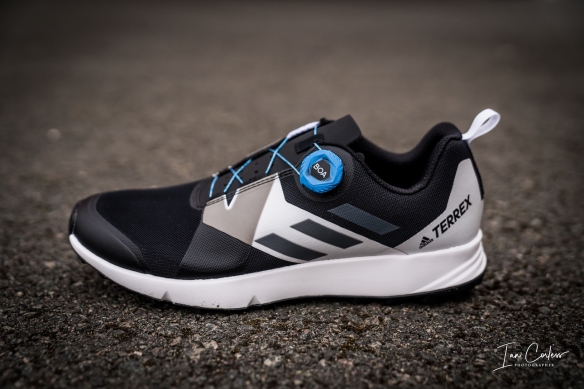

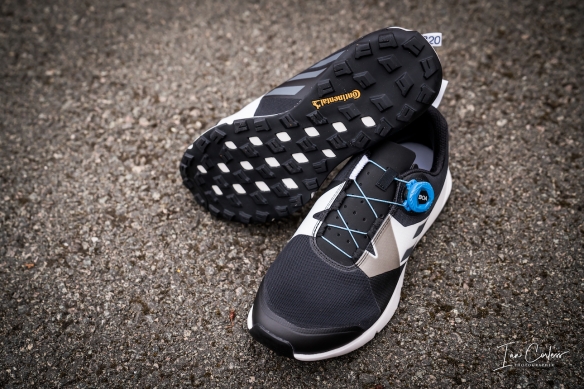
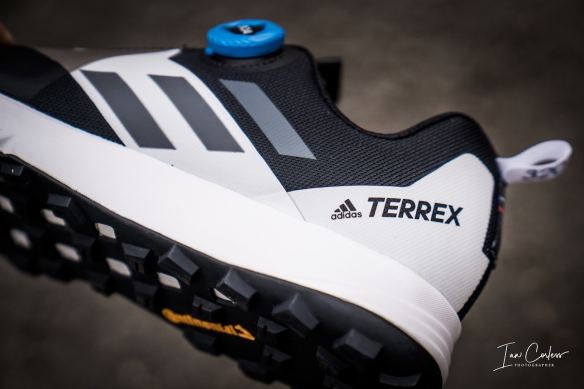


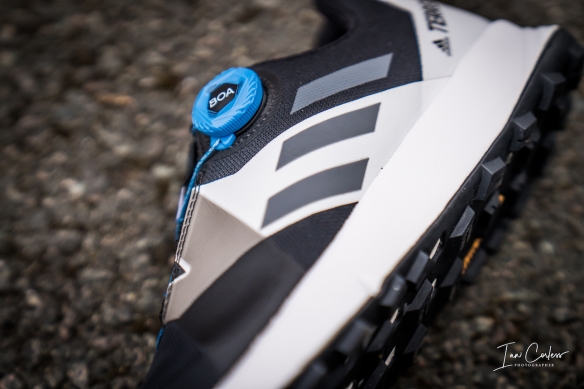
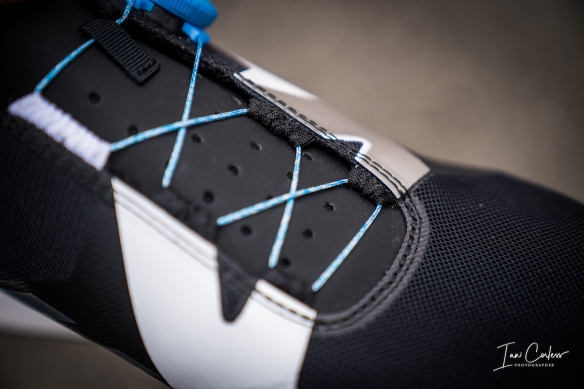

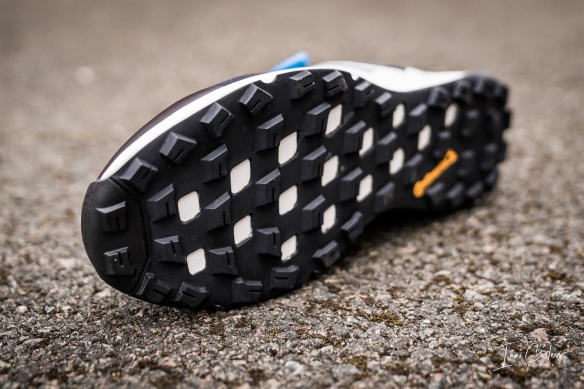
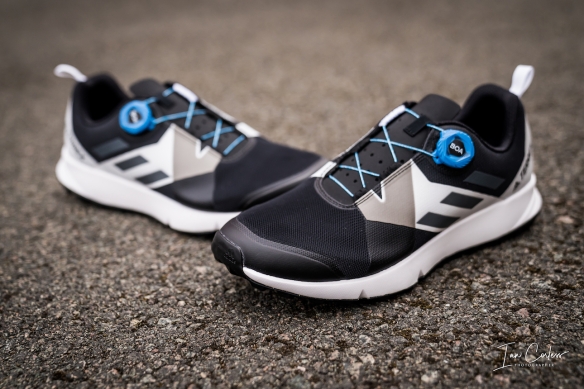


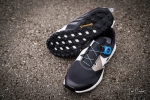




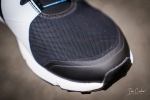




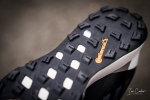


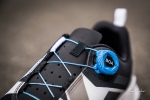


















































































































 Kevlar and Polyester make the upper and the IRock 2 has been the most durable shoe I have ever used, so, I don’t anticipate the VJ XTRM to be any different. There is also Fiberclass stability control.
Kevlar and Polyester make the upper and the IRock 2 has been the most durable shoe I have ever used, so, I don’t anticipate the VJ XTRM to be any different. There is also Fiberclass stability control.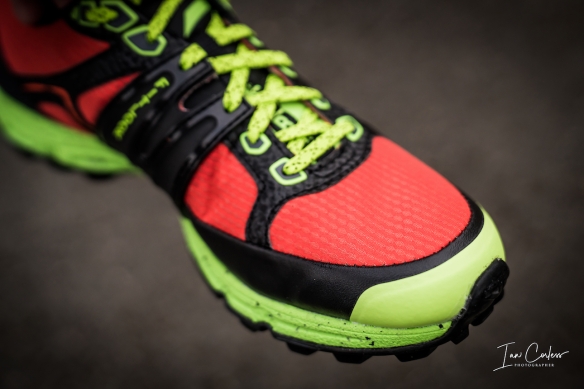
 sport
sport